By Lindsey Kouvaris
As museums, our charge is to care. We take possession of historical objects, cultural artifacts, and works of art. We commit to exhibiting them, caring for them, and preserving their place in history. And, we adopt institutional missions, collections policies, and collecting goals to help guide us through the process.
But, what about the objects that don’t seem to fit our collections? You know the ones. We almost all have them—those odd little things that someone said yes to before your collections policy was in place or agreed to take in order to cultivate a particular donor. Or, said yes for myriad other reasons that made sense at the time.
As a curator of a collection of more than 12,000 objects, I know these outliers well. The de Saisset Museum opened in 1955 and it took us nearly four decades to establish a formal collections policy. Newspaper articles from the 1950s encourage the public to give. And they did—some with gusto.
I have been known to joke about mounting an exhibition of the oddest things in our collection, but for the moment those objects remain tucked away in our vault.
At a recent Host Committee meeting in preparation for the Western Museum Association’s 2015 Annual Meeting in San Jose, we spun off topic talking about our collections—what some of the highlights are, but also what the strangest acquisitions have been. It made me realize that not only is the de Saisset Museum not alone in its quest to care for outliers, but that those of us holding onto these little oddities have a desire to share.
And so, from the vaults of Silicon Valley, here are a few of the strangest things we could find.
Located at the heart of Santa Clara University, a few miles northwest of downtown San Jose, the de Saisset Museum highlights the art and history of the San Francisco Bay Area with a goal of facilitating discovery, experience, and inspiration.
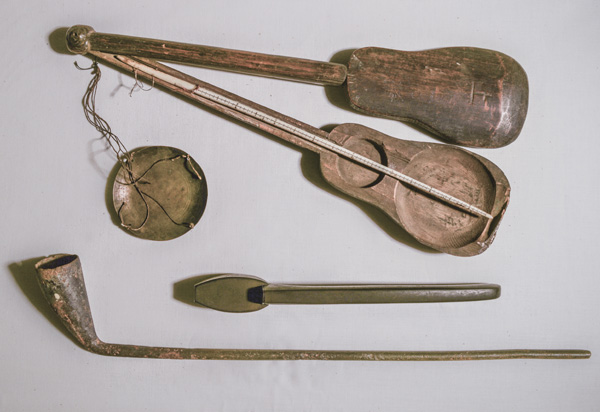 Given by an unknown benefactor, collections records are thin when it comes to these opium pipes and scales. Considered part of the California History collection, other objects that stand out include Mission Period bullet molds, a cannon ball, and coffin nails.
Given by an unknown benefactor, collections records are thin when it comes to these opium pipes and scales. Considered part of the California History collection, other objects that stand out include Mission Period bullet molds, a cannon ball, and coffin nails.
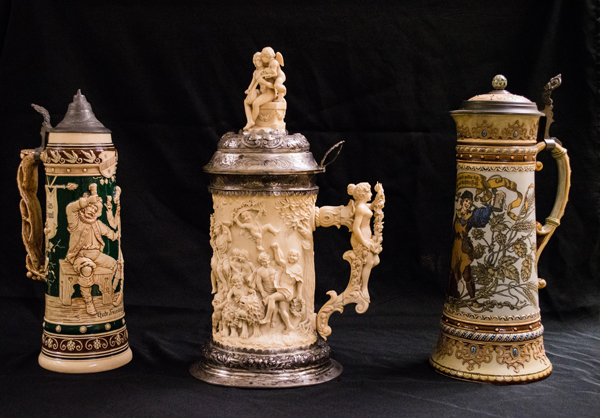 Between 1955 and 1965 the de Saisset accepted a large gift of decorative arts from E.V. D’Berger. Among other things, the gift included approximately 50 beer steins from Germany, Austria, and Belgium in materials such as ivory, pewter, brass, glass, and porcelain. Shown publically only a handful of times in the museum’s sixty year history, the steins were accepted with restrictions and will likely never be removed from the de Saisset’s collection.
Between 1955 and 1965 the de Saisset accepted a large gift of decorative arts from E.V. D’Berger. Among other things, the gift included approximately 50 beer steins from Germany, Austria, and Belgium in materials such as ivory, pewter, brass, glass, and porcelain. Shown publically only a handful of times in the museum’s sixty year history, the steins were accepted with restrictions and will likely never be removed from the de Saisset’s collection.
Located in Kelley Park southeast of downtown San Jose, History San José’s mission is to collect, preserve and celebrate the stories of diversity and innovation in San Jose and the Santa Clara Valley.
These busts, figurines, and statues are but a small selection of over 750 items donated to History San José by former San Jose resident Joseph Jenkins from his collection of George Washington and Mt. Vernon memorabilia. The collection includes sheet music, ephemera, engravings, commemorative coins, campaign buttons, and napkin rings.
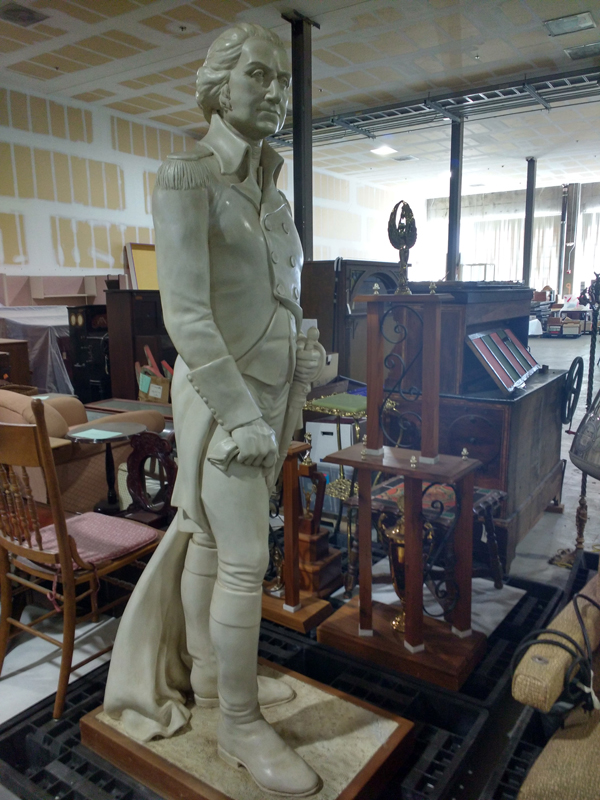
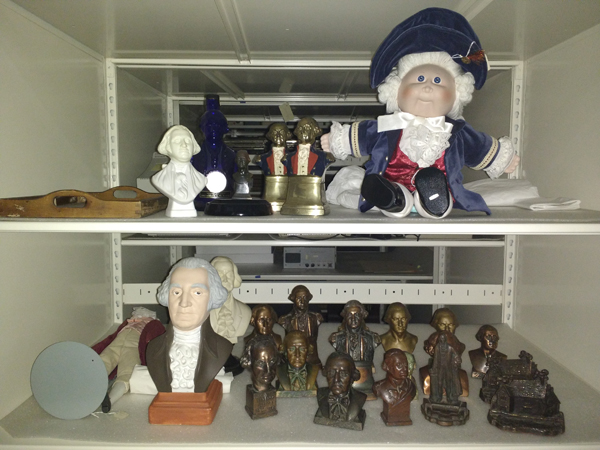
The roots of Mr. Jenkins’ fascination with George Washington are unknown. The collection was donated to the original San Jose Historical Museum in 1988 before the museum had a clear collections policy. The objects are now part of History San José’s master catalogue.
Located on one of the few remaining apricot orchards of Santa Clara Valley, the Los Altos History Museum explores the rich history of local people and how the use of the land over time has transformed the agricultural paradise once known as the “Valley of Heart’s Delight” into the high technology hub of today’s Silicon Valley.
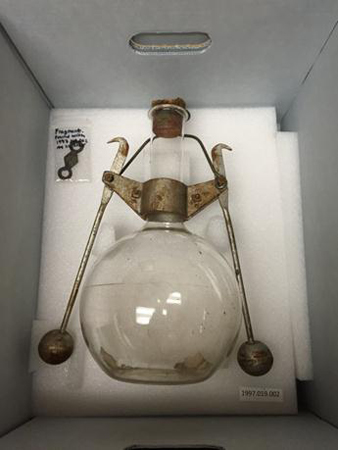
Manufactured c. 1905, this fire extinguisher was found in the attic of the Paul Shoup House in Los Altos. The extinguisher contained its original fire retardant chemicals when it was donated to the Los Altos History Museum in 1997. It is now safely housed and precautions have been taken to keep the metal arms from accidently shattering the glass.
San Jose Museum of Quilts and Textiles
Located in the heart of downtown San Jose, the San Jose Museum of Quilts and Textiles promotes and celebrates the art, creators, craft, and history of quilts and textiles.
In the Yoruba culture of Nigeria, Egungun are the ceremonial masquerades used to worship and honor ancestors. This ceremonial garment is composed of numerous layers of cloth lappets made from precious and expensive woven textiles, reflecting the power and prestige of its owner. During performances, the wearer spins around and the lappets are sent whirling, creating a “breeze of blessing.”

Egungun Ceremonial Garment, 1930-1980; Gift of Dr. and Mrs. Stephen Leavitt
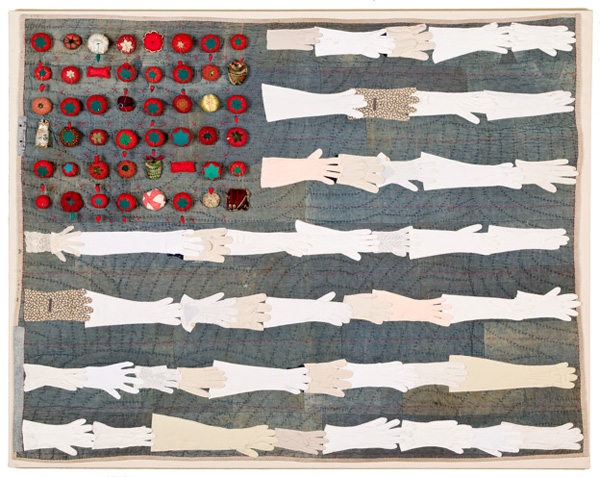 In Old Glory, artist Marianne Lettieri gives new life to the iconic stars and stripes of the American flag. She used a quilt made by her grandmother as the base, and added out-of-fashion white gloves and an eclectic collection of red pin cushions to complete the image. Though her choice of materials may seem a bit surprising, Lettieri pays tribute to women’s work from Betsy Ross to today’s fiber artists.
In Old Glory, artist Marianne Lettieri gives new life to the iconic stars and stripes of the American flag. She used a quilt made by her grandmother as the base, and added out-of-fashion white gloves and an eclectic collection of red pin cushions to complete the image. Though her choice of materials may seem a bit surprising, Lettieri pays tribute to women’s work from Betsy Ross to today’s fiber artists.
Join us in San Jose this October 24–27 for the WMA 2015 Annual Meeting. Learn more about registration here.
Lindsey Kouvaris is the Assistant Director of Exhibitions and Programs at the de Saisset Museum at Santa Clara University. In her current capacity, Lindsey is responsible for the planning, coordination, and organization of the museum’s exhibitions, public programs, education outreach, and marketing and publicity efforts. She is the author of “Moving Forward: Santa Clara’s Story of Transformation,” a multi-touch book for the iPad, and a contributing author for “Brian Wall: Squaring the Circle” and “FACE: Portraits by Valentin Popov,” due to be released in 2016.








Comments
Out if sight...
I am really surprised to read that you don´t consider opium trade and consumption part of San Francisco past, or bullets part of the missionary era... feel fortunate to have those outliers as witnesses against whitewashed versions of History
Add new comment